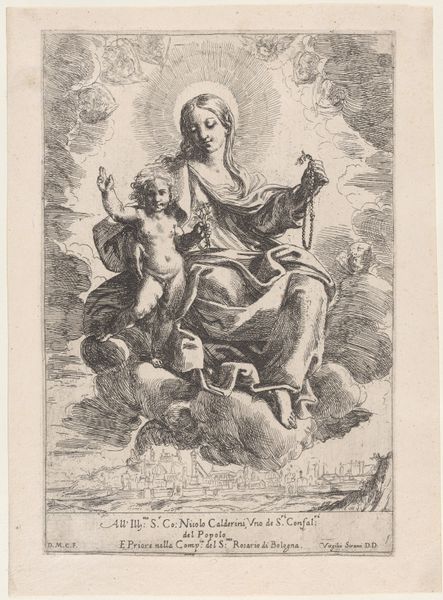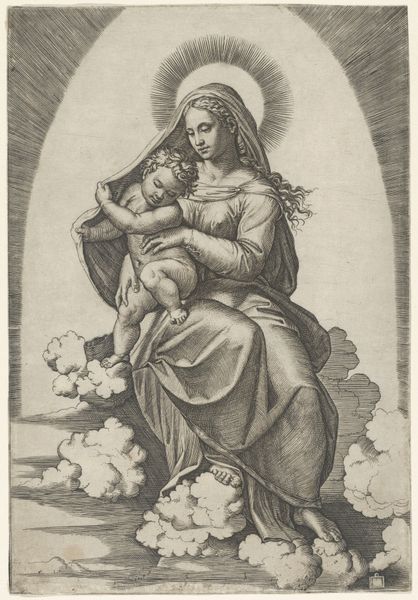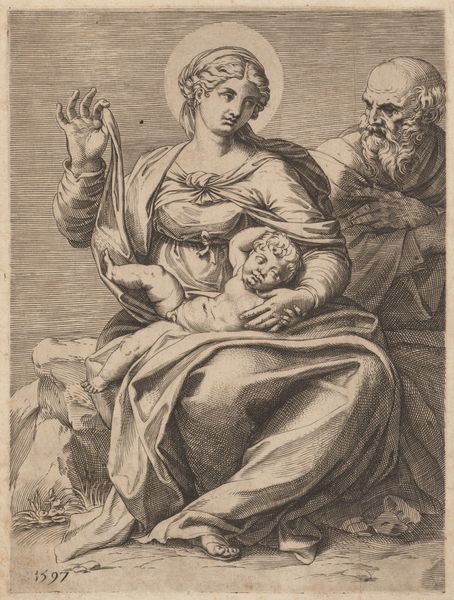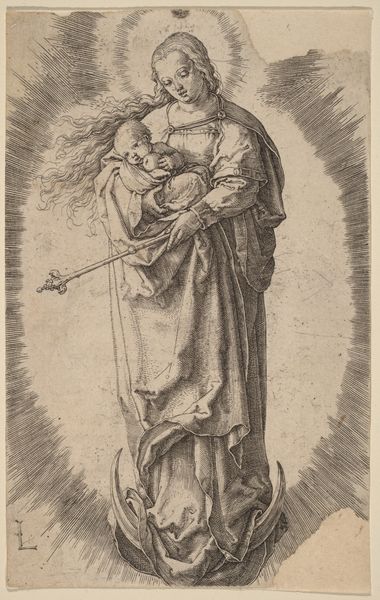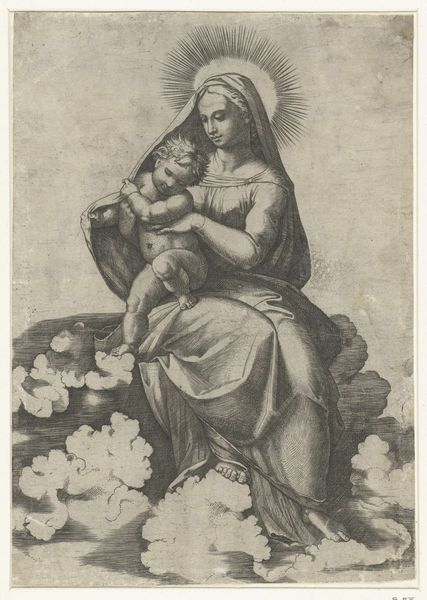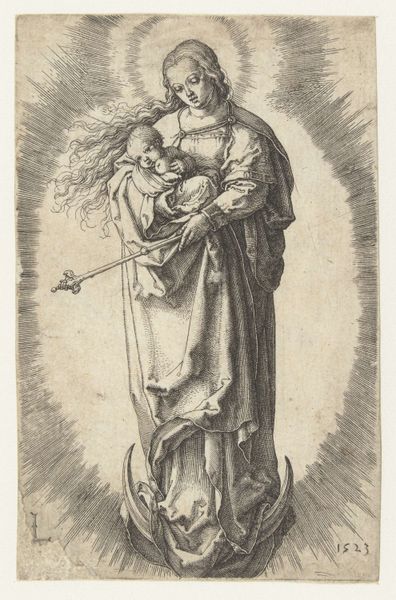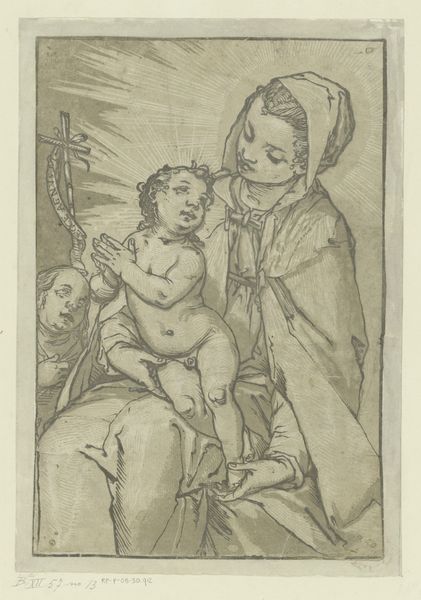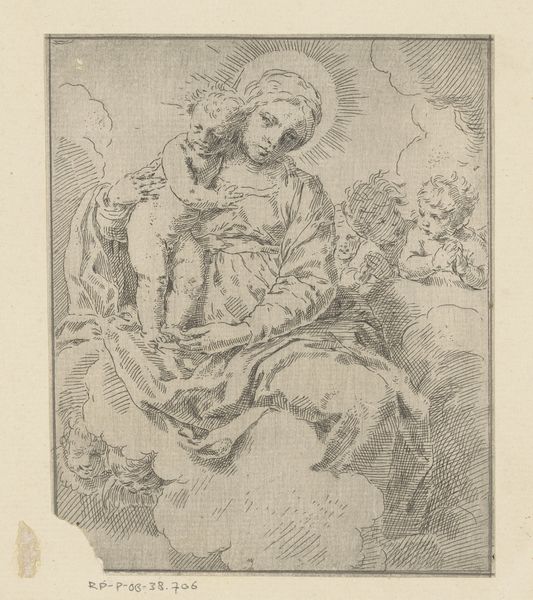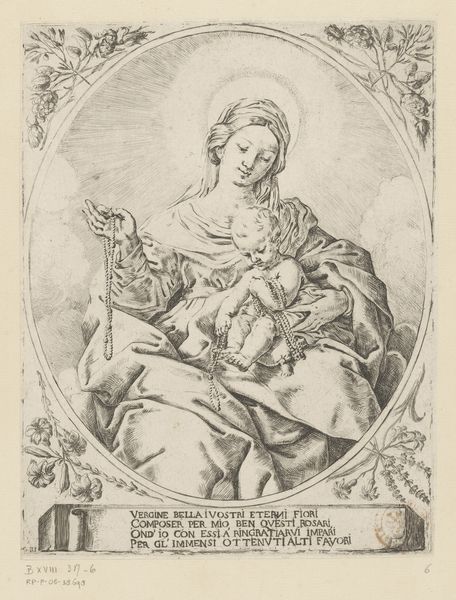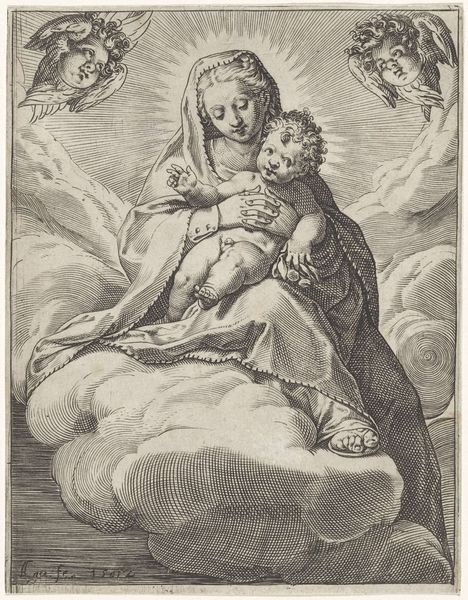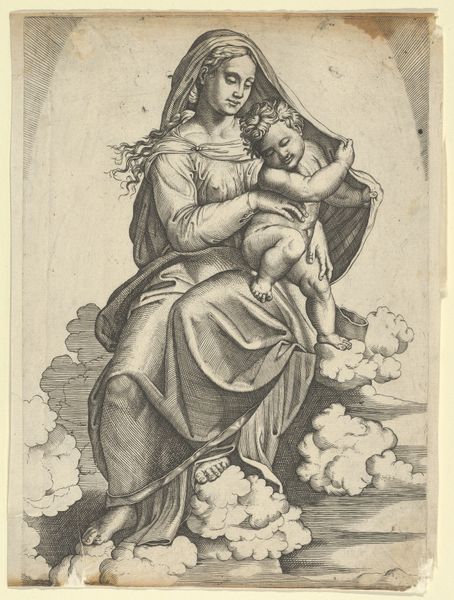
drawing, print, engraving
#
drawing
# print
#
figuration
#
history-painting
#
italian-renaissance
#
engraving
Dimensions: sheet: 6 x 4 3/8 in. (15.2 x 11.1 cm)
Copyright: Public Domain
Curator: Here we have “Virgin and Child Seated on a Stone Slab,” a 16th-century engraving by Lambert Suavius. It's currently held at the Metropolitan Museum of Art. Editor: It's immediately striking how severe it is. The Virgin Mary isn't usually presented with this much solemnity and, honestly, the texture of the lines almost makes the image feel cold. Curator: The artistic and cultural landscape during the Italian Renaissance deeply shaped this image. The public role of religious imagery was, of course, incredibly prominent at the time, acting as visual pedagogy. It’s more than a representation; it reinforces a structure. Editor: Exactly, and those structures often carried inherent social and political biases. Look at how the engraving handles themes of power and the family. How is this Madonna figure meant to enforce ideas about idealized motherhood and piety? The piece almost screams tradition! Curator: Absolutely. Note how the radiant lines behind the figures function to present them within the visual context of holiness, reinforcing established ideas within religious spheres. And it is not unique for its time. The use of engraving techniques was also very popular, and allowed to spread these visual motives across Europe, for instance. Editor: Yes, I see this circulation contributing to those Renaissance discussions on faith and its entanglement with society. I wonder if it reinforced power imbalances, maybe even unconsciously. It seems the Renaissance loved idealizing and standardizing things, but how inclusive was this standardization? Curator: Those are the vital questions that ensure an artwork speaks across centuries. By drawing the connections to identity and race and gender that you mention, we can offer deeper perspectives for today’s audiences. Editor: Ultimately, it's a sobering reminder of how historical images played a key role in shaping collective belief systems. Curator: I agree. It’s interesting how one work can inspire such diverse trains of thought.
Comments
No comments
Be the first to comment and join the conversation on the ultimate creative platform.
